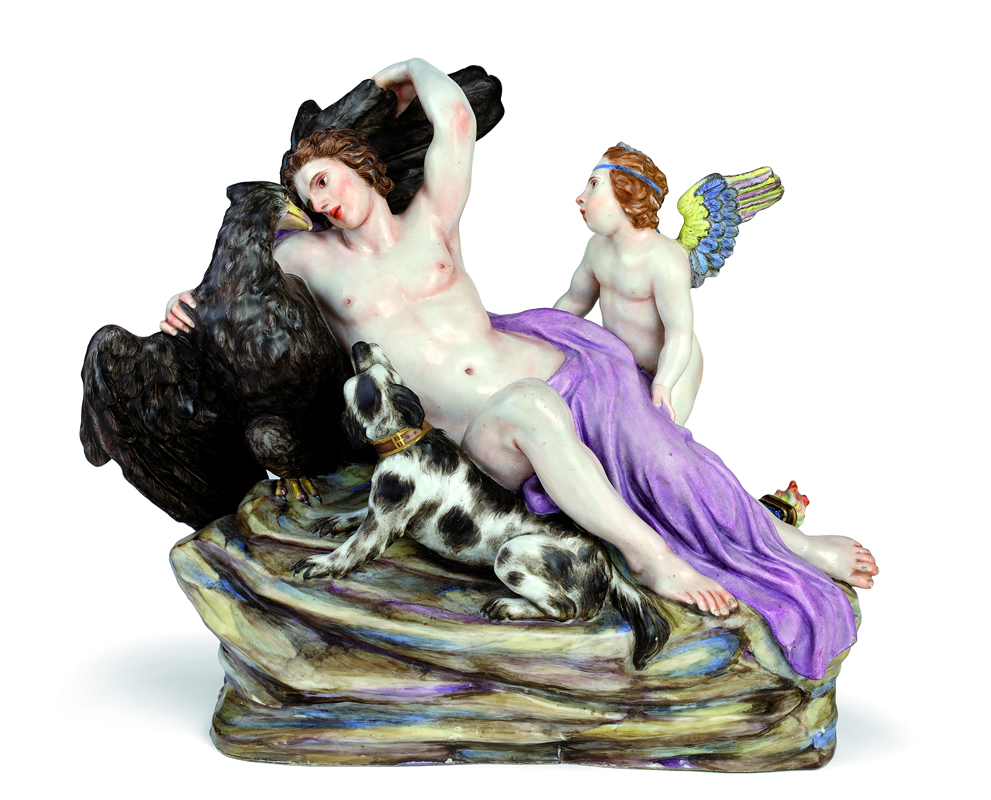Many of the main European manufactories are represented in the catalogue, several of considerable interest. A plate by Meissen, for example, dated to around 1745 from the famous service made for August Friedrich Reichsgraf von Seydewitz (1695-1775) is included in the Sale. The Seydewitz family were created Barons in 1731 and Reichgrafen (Counts of the Holy Roman Empire) in 1743, a date that enabled the service to be dated with precision. Further examples from the Meissen manufactory in the Sale include the rare series of twelve small candlesticks from 1763-1774, an elegant example of the finest Rococo productions from the Saxon manufactory in the 60’s of the Eighteenth century, attributable to the latter phase of the work of Kaendler in Meissen.
This was a moment during which the factory’s modellers were adapting their work to the new style with the utmost elegance and the most sophisticated of skills. Among the porcelain pieces from Doccia there is an important and large polychrome group featuring “Ganymede and the Eagle”, datable to 1760 -1770. The piece may be attributed to Gaspero Bruschi and is derived from the bronze group of 1717 by Massimiliano Soldani Benzi, now at the Fitzwilliam Museum in Cambridge. The group appears in the archives of the Tuscan manufactory as, Gruppo rappresentante Ganimede. Del Soldani in cera con forma…. (a Group Representing Ganimede. By Soldani, the form in wax), as may be read in the insertion no. 22, on Page 21 of the ”Inventario dè Modelli“. As far as Neapolitan porcelains are concerned, the beautiful and large figure in biscuit of a Muse is of noteworthy interest (datable to around 1800) and most probably one of the nine (eleven) seated Muses….. mentioned in the lists in the archives of the Neapolitan factory. Among the many pieces in maiolica, both from Italy and the rest of Europe, there is a magnificent polychrome pharmacy vase made in one of the Venetian manufactories by Geminiano Cozzi in the years around 1780 and sumptuously decorated in relief patterns. The enthusiast, however, will also discover ceramics in the Sale with humbler estimates but of the utmost interest for collectors and historians alike. An example of this is the small biscuit group made at the end of the Eighteenth century in an unknown French manufactory and a copy of a model by Falconet made at Sèvres in 1766: a charming representation inspired by the theatre play entitled “La Bohémienne” which was presented to the public in 1755.
938 Views |
Like

